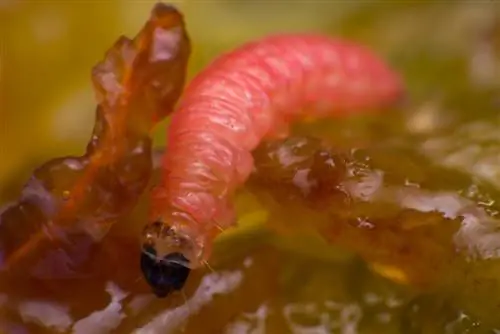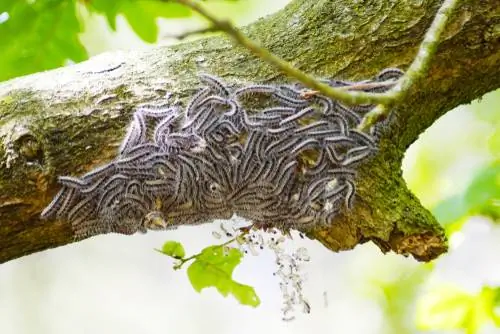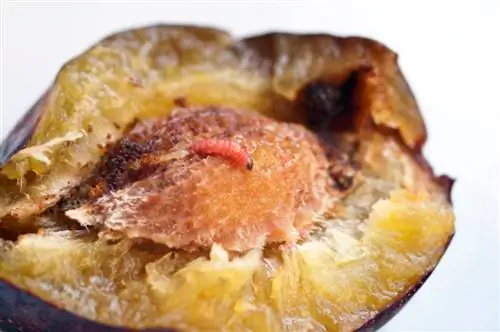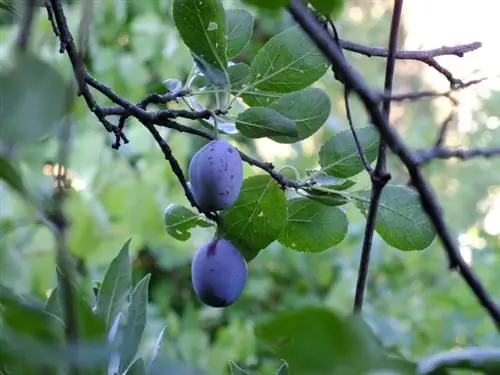- Author admin [email protected].
- Public 2023-12-16 16:46.
- Last modified 2025-01-23 11:22.
If your plum tree drops its fruit prematurely and you unfortunately find maggot-like animals in it, you are most likely dealing with the plum moth. The butterfly is a nuisance pest in agriculture and private gardens.

How to fight maggots in plums?
Maggots in plums are caused by the plum moth, a moth that lays its eggs on fruit. To combat it, you can remove infected fruit, set up pheromone traps, attach trapping belts to the tree trunk and use natural predators such as parasitic wasps.
What you need to know about the plum moth
The plum moth, zoologically known as Grapholita funebrana, is a moth that lays its eggs on fruit trees such as
- Apricots
- Sour cherries
- Pears
- or plums
specialized. The adult butterfly has elongated triangular wings with a gray-brown pattern.
To reproduce, the female lays her eggs on the underside of the fruit in late spring. From there, the hatching caterpillars bore into the fruit and feed on it inside.
Two generations develop over the course of the season because some of the caterpillars take a break in their development in the meantime. To metamorphose into a butterfly, they pupate in white webs on the tree or on the ground.
malicious image
The fruits ripen prematurely due to the infestation and fall off. There is usually a colorless droplet hanging on the underside where the caterpillar has burrowed.
How to get rid of plum moth?
Remove infected fruit
The best way to combat an acute infestation is to dispose of all infected fruits as thoroughly as possible - i.e. all the fallen fruit and the fruits that are still hanging and have the typical drill hole.
Pheromone traps
In spring around the mating season (May/June) pheromone traps (€12.00 on Amazon) can help. They attract the males with a sexual scent and trap them, so that fewer females can be mated.
Catch belt
A trapping belt is a fairly effective method of containing new generations of plum moth the following year. Catch belts, which are available in garden shops from various manufacturers, work purely mechanically: from June onwards, they are simply wrapped around the trunk at a height of 20-40 cm and serve as caterpillar collectors. The pre-developed caterpillars tend to crawl up the tree trunk from the ground to pupate - they find ideal conditions for this in the catch belt. If you check the belt about every two months, you can catch a large proportion of the caterpillars and render them harmless.
Parasitic wasps
Using natural predators is one of the most natural methods of pest control. Parasitic wasps are suitable opponents against plum moths. They are released via cardboard cards 2-3 times a year from June onwards. One parasitic wasp can parasitize up to 120 plum moth eggs.






